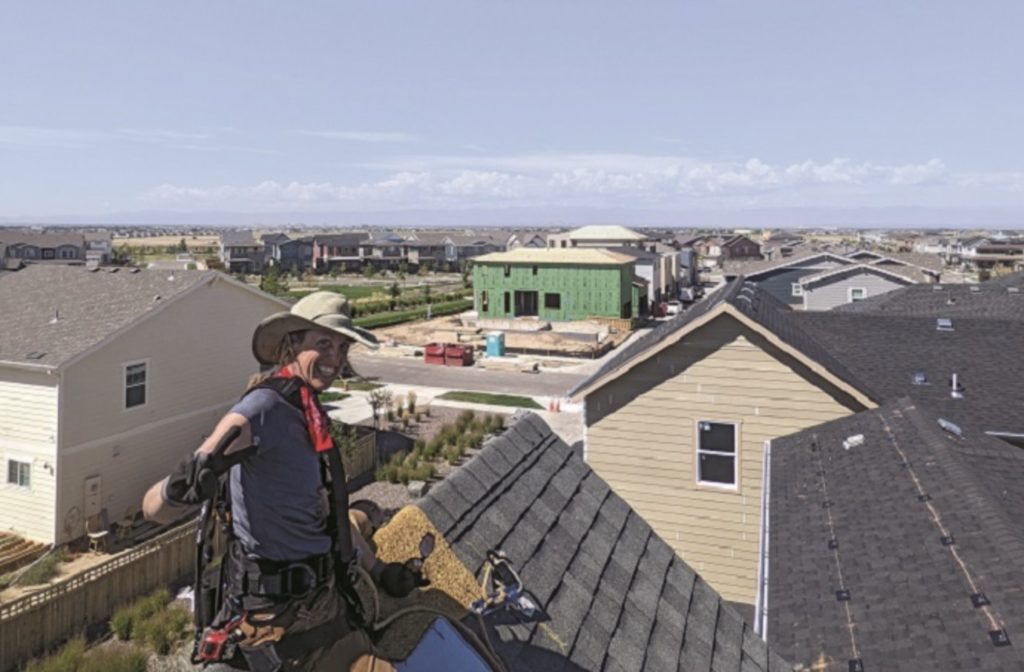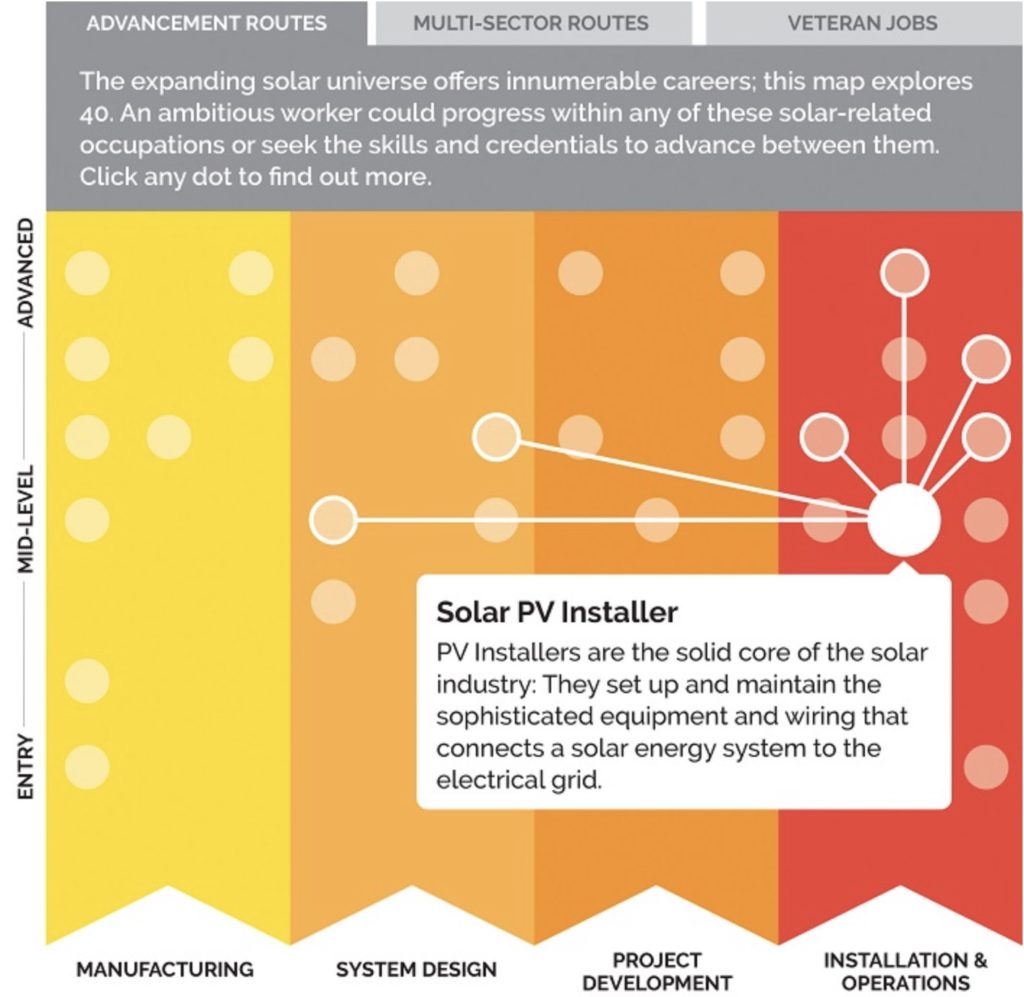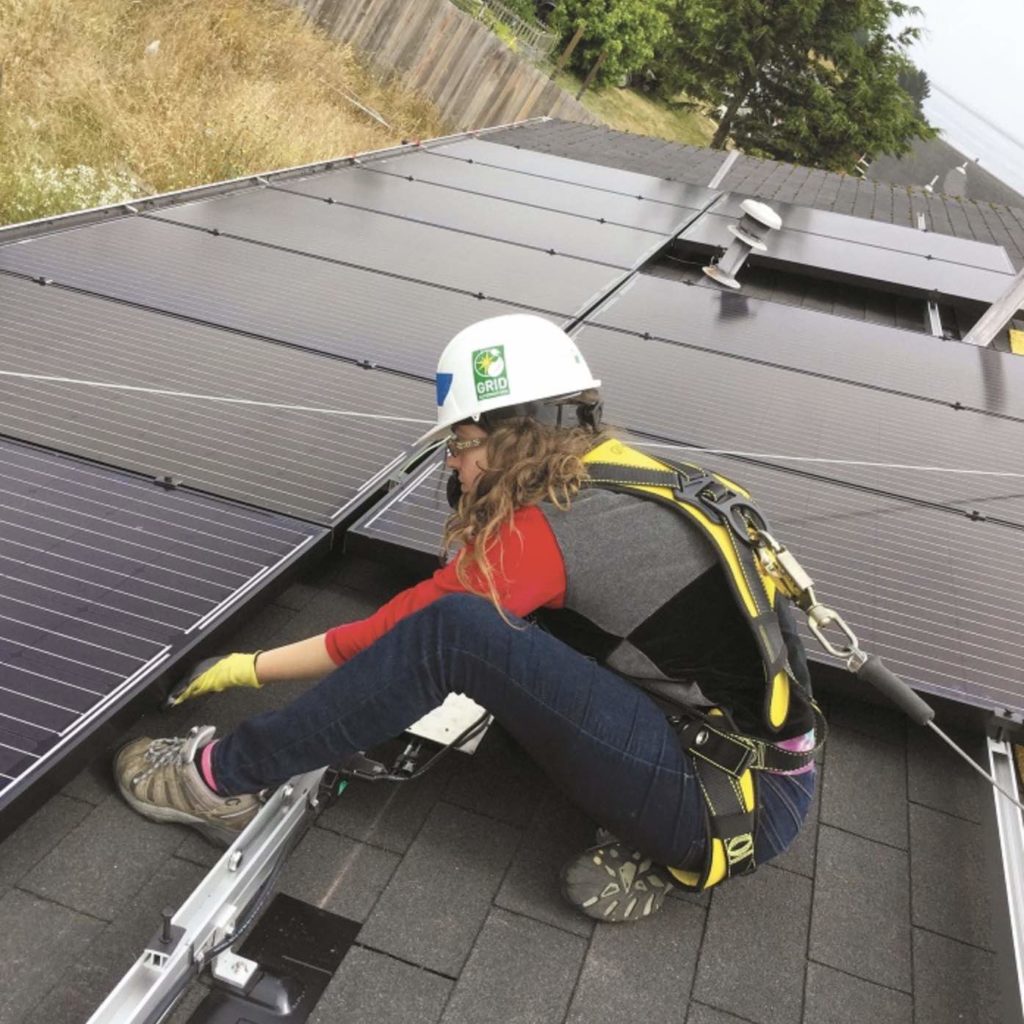Apr 26, 2023
Clean Energy Workforce Alliance Targets Ambitious Goals
Hundreds of billions of dollars worth of investment are poised to flow into solar and other clean energy industries following the passage of the Inflation Reduction Act. Addressing hiring challenges and building a robust pipeline of well-trained workers will be essential.
By: Laure-Jeanne Davignon and Gwen Brown

Hiring challenges for the clean energy industry have been recurring themes over the last decade. In 2021, the National Solar Jobs Census1 published by our organization, the Interstate Renewable Energy Council, found that 89% of solar employers reported that it was “somewhat” or “very” difficult to fill their job openings, with 49% citing the small applicant pool as the most significant reason. Additional barriers must be overcome to include populations currently underrepresented in the solar industry.
There are a number of reasons that the hiring pool has not kept pace with available jobs. Lack of awareness about opportunities for family-supporting, innovative careers in solar and other clean energy fields is a top barrier to market expansion. Even where awareness or interest exist, pathways into the solar industry are not clearly defined or widely promoted and potential workers cannot consistently identify credible information about training and jobs.
We stand on the cusp of what is likely to be the most significant growth the solar industry has seen. Hundreds of billions of dollars worth of investment are poised to flow into solar and other clean energy industries following the passage of the Inflation Reduction Act. Addressing our hiring challenges and building a robust pipeline of well-trained workers will be essential.
Luckily, a new initiative, the National Clean Energy Workforce Alliance,2 is bringing together stakeholders across the value chain to create and share a holistic strategy for improving workforce outcomes.
Crowdsourcing Workforce-Development Best Practices
The IREC Workforce Program works to support the growth of a highly trained and inclusive clean energy workforce that empowers individuals and communities, so we are regularly in touch with solar employers. Starting in 2021, the calls and requests from employers looking for new, skilled talent became more frequent and a bit panicked. Solar employers saw enormous opportunity heading their way, with no clear pathway to grow their workforce. Fast-forward about a year to the passage of the historic IRA — and this low buzz of concern has become a cacophony.
There is no single silver bullet for employers seeking new talent. Effective workforce development is an intentional process involving strategic partnerships in communities across the country. This is especially true when it comes to building a workforce that includes workers who have previously been underrepresented.
Recognizing this need, IREC and the National Council for Workforce Education formed the National Clean Energy Workforce Alliance in late 2021. The 500+-member alliance unites stakeholders across the clean energy value chain to improve recruitment, education and placement outcomes. The idea is that we are stronger together and can learn from each other — as well as from industries that have faced similar challenges.
You can see some of the initial outcomes of the alliance’s work on our website.3 A more comprehensive report detailing solutions and information about specific projects and programs that can be scaled to address our workforce needs will be published in late 2022. Keep your eyes peeled for that resource. But your ‘sneak peek’ is here.

Raise Awareness with Recruitment Tools
Career maps such as IREC’s Solar Career Map4 are interactive tools that make it easy to explore potential roles, including what the work involves and what credentials or training are needed, as well as the salary ranges and advancement potential.
By making accessible key information about the range of careers in clean energy, these maps can make a significant difference in helping potential workers and those supporting them understand the opportunities and career pathways. They can also help highlight the value of jobs in the skilled trades.
Similar to other sectors relying heavily on the skilled trades, solar is impacted by the persistent and pernicious stigmatization of career pathways in the trades. Our academic frameworks frequently emphasize attainment of academic degrees while overlooking great opportunities for family-sustaining careers in the trades.
IREC’s solar and other career maps feature many “new-collar” jobs that may not require a traditional four-year college degree — instead, they rely on certifications, training at workplaces, education, and other paths, making them a fit for students who will not and/or cannot attend college.
Job-training organizations have used career maps with great success to showcase the merits of different clean energy career paths. In the energy efficiency sector, John Pady, chief expansion officer of the Green Generation Workforce Development Initiative, which provides job training to high school students, said that IREC’s career map for the energy efficiency sector played an important role in his approach to engaging students and parents.
“[We] pulled up the Green Buildings Career Map and used it to really visualize [the options] to the students so that they could understand — and so that their parents could understand — that what they were going to embark on over the next four years is something that can lead to sustainable, meaningful and gainful employment,” Pady said.5
IREC’s career maps and other career-exploration resources are already available and have been accessed by over 135,000 users over the last three years — but IREC and our partners have identified a need to centrally locate resources for potential job seekers. We are working on solutions that are easy to locate for audiences not yet familiar with our industry and that provide a means to directly connect to training opportunities and jobs. We are also continuing to develop new resources to support training providers,6 industry employers, and community organizations serving potential workers to encourage a more robust pipeline.

Invest in Community Partnerships
One significant marker of every successful workforce program is that it includes multiple (often numerous) partners, including trainers, educators, employers, and organizations working in communities to remove barriers to workforce entry.
Solar One is a nonprofit organization whose mission is to design and deliver innovative education, training and technical assistance that fosters sustainability and resiliency in diverse urban environments. It serves a variety of audiences including at-risk youth and individuals with prior justice involvement. Its Solar Career and Technical Education Program in New York City is grounded in the community, leveraging local partners to help remove barriers for underserved populations.
“We employ great intentionality with our partners in the community and work with organizations that have already earned the trust of those they serve. Your heart needs to be in the right place when working with vulnerable populations,” said Geovani Caldero, environmental and solar workforce instructor at Solar One.
“Representation plays an important role in the success of our programs — our participants feel more confident when they see an instructor that comes from the same community that they belong to,” he said.
This meaningful connection to the community is the key to Solar One’s successful model of integrating solar education tied to emerging clean energy careers into CTE programs across NYC. Its team has served 2,700 students in 15 schools since 2016.
Solar companies that have a presence in multiple states and communities and are concerned about the resources needed to support this type of high-touch outreach, consider this: If you can afford to conduct business in a community, how can you afford not to develop meaningful relationships on the ground in those same places?
Innovative Training
To develop and scale the highly skilled workforce needed to meet our country’s clean energy and social equity goals, the solar industry is evolving and innovating our training practices. One of the challenges during previous rounds of investment in solar training was a disconnect between the skills taught in classrooms and those needed by employers on the job.
To correct this misalignment, successful training providers are increasingly including employers in all phases of workforce training and leveraging tried-and-true methods to ensure knowledge and skills transfer seamlessly to the job.
“IREC’s approach to training is somewhat innovative for clean energy, but is really just solid, research-supported practice with a focus on the needs of adult learners,” said Kristen Hagerty, senior director of workforce development at IREC. “Effective job-focused training involves use of multimedia formats and realistic scenarios to simulate conditions in the workplace. Participants practice skills and have the ability to make and correct mistakes in a low-stakes environment.”
Online instruction will also support workforce growth and equitable access by providing high-quality training at scale, including to participants from rural and other hard-to-reach demographics.
“There is always a way to convey knowledge and skills to learners that they can bring to the workplace,” said Michelle Pletch, an instructional designer with ELB Learning, a national leader in the training and e-learning industry. “That way, employees have a head start when they enter your workforce.”
For instance, a code official can learn to utilize a checklist to inspect a virtual PV system using video before ever needing to be out in the field for a live inspection.
As we look to the future, we will benefit from opportunities to embed clean energy skills into existing training and educational pathways rather than creating standalone programs.
For example, we can include solar training in more electrical training programs and add training on technologies such as air source heat pumps in more high school and community college trades programs.
Our clean energy future will also require a broader array of professionals to have a clean energy aspect to their jobs. More than 20,000 safety officials, including code officials and firefighters, have benefited from national solar training7 deployed by IREC and our partners. Real estate agents, financiers, and so many more audiences will need solar knowledge under their belts to participate in the new clean energy economy.
Build Apprenticeship Opportunities
Now required to access the maximum tax incentives for solar, registered apprenticeship programs are the Cadillac of clean energy training programs, rich with benefits for both workers and employers.
Apprenticeship is an industry-driven, high-quality career pathway where employers actively participate in developing and preparing their future workforce. Individuals can obtain paid work experience, classroom instruction, and a portable, nationally-recognized credential.
Although there are currently very few solar-specific programs, this pathway is well developed for construction, electrical and adjacent trades.
IREC and our partners in organized labor and the trades are working to promote these opportunities to more workers and employers and ensure that more union and non-union workers can participate in the clean energy transition.
More and more employers will be able to grow their talent through the ReVision Energy Electrical Apprenticeship Program,8 which is the first employer-based apprenticeship program in the nation to provide the academic training required for renewable energy professionals to earn electrical licensure.
Focus on Job Quality
A critical element of the just transition is ensuring that the jobs we are recruiting workers into are of high quality and offer family-sustaining salaries and benefits. The clean energy transition will not be just if we try to recruit workers into jobs where quality does not already exist. Beyond salary and benefits, we will want to ensure that workplace culture can support new and diverse workers.
Let’s work together to deliver on a promise of worker safety, not just in the usual physical sense but also in the security of a long-term career pathway. Investing in company culture through programs like SEIA’s diversity, equity, inclusion, and justice certification9 and other resources can help foster an environment where employees thrive and stay.
Consider making professional advancement pathways more defined and transparent so your company will benefit from decreased talent-acquisition costs by retaining employees who become more highly skilled as they move up through the ranks.
Creating this type of dynamic not only supports equity but is the best way to position our industries as preferred employers positioned to tackle the climate emergency.
No Need to Reinvent the Basics
We have our work cut out for us in the solar industry, and other clean energy sectors to overcome current recruiting challenges and build an inclusive and vastly larger pipeline of highly trained workers prepared to deliver on the promise of a just transition to a low-carbon economy.
Fortunately, many effective workforce-development strategies already exist, vetted by the experiences of employers in our industry and beyond. As we enter a bold new era of climate action, the key will be for employers to plug into shared resources, best practices, and collaborative networks of professionals facing similar challenges. The Clean Energy Workforce Alliance is building a community for this purpose. We invite you to join us.10
Sources
- https://tinyurl.com/solar-jobs-census
- https://tinyurl.com/clean-energy-WF-alliance
- Ibid.
- https://tinyurl.com/solar-career-map
- https://tinyurl.com/career-map-success-story
- https://tinyurl.com/online-training-development
- https://tinyurl.com/clean-energy-training
- https://tinyurl.com/revision-energy
- https://tinyurl.com/DEIJ-certification
- https://tinyurl.com/alliance-signup
This article originally appeared in Solar Today magazine and is republished with permission.





